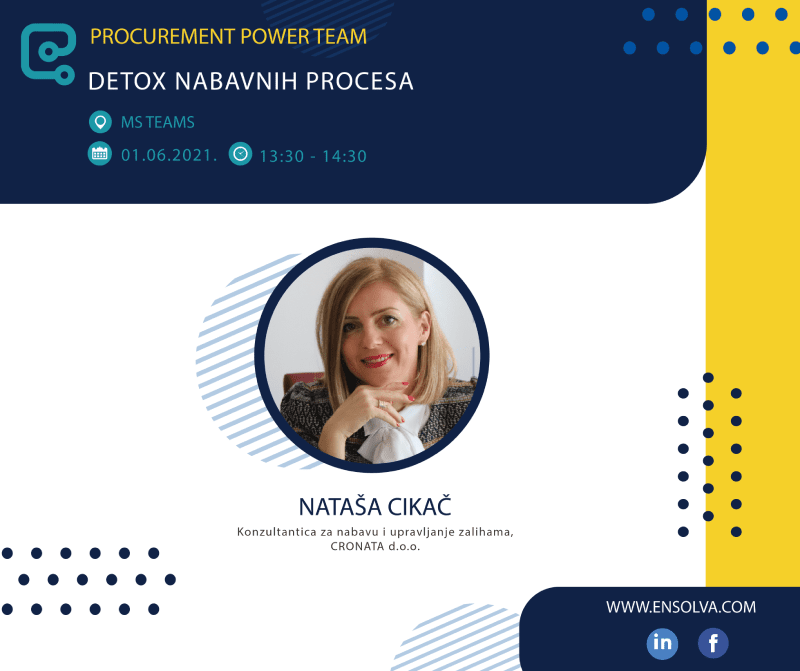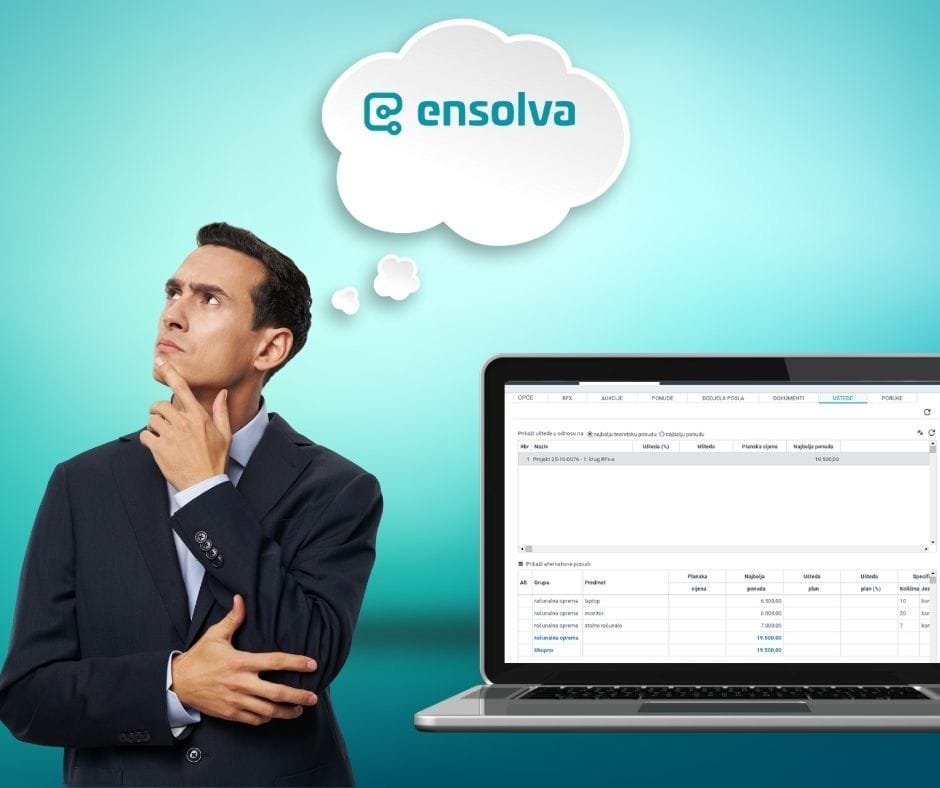Detoxification of procurement processes
The digital transformation of procurement as a business process is inevitable, but the successful implementation of specialized procurement systems requires changes much sooner. Roles, tasks and goals in procurement were revised Procurement has grown from a routine and administrative activity into a strategic function!
The most important step is to diagnose the problem and learn the “bottlenecks” and then start acting. It’s not always that simple. In the Ensolva Procurement Power Team studio, we hosted Nataša Cikač, who, as an experienced head of the Procurement Academy, shared valuable tips on how to detoxify the procurement process.
Procurement is a process that must flow!
The process of finding and accepting conditions and procuring goods, services or works from an external source becomes a process in which roles, rights, obligations and responsibilities need to be coordinated, with a strictly defined timeline, between different people and departments within (and throughout) the organization. Procurement is determined by the following parameters:
Goods / services
Amount
Quality
Timeliness
The location
Price
The bottleneck is at the beginning of the process
– It is important and crucial to set the course of the process, and it is usually stuck at the beginning. The most common questions that arise are: where does the procurement process begin and who initiates it. The beginning can be defined in two ways according to the state of stocks or initiated by internal users who need something, said Nataša Cikač and added that the most common reasons are vaguely defined procurement requirements and vaguely defined way of initiating procurement.
As key stages of the procurement process, each of which has its own laws and tools, she singled out:
- Stock status or internal procurement requisition
- Inquiry / offer
- Purchase order / contract
- Delivery
- Receipt
- Invoice / payment
- Complaints
According to her, procurement has the ultimate task of ensuring the continuity of the production process, ie business activities. In order to be the right support, it must receive quality inputs and have well-established relationships with suppliers to meet its goals. Among other things, savings must be incorporated here. Procurement is a proactive strategic approach that constantly has new opportunities.
Time is the most valuable procurement resource
According to the PAM methodology, it is possible to detect the state of the procurement process with a simple approach, regardless of whether it is at the level of one person or 30 people in procurement. The methodology consists of four parameters: processes, resources, operations, and measurability, and their assessment should achieve the desired detox:
- Awareness of bottlenecks
- Finding room for improvement
- Reducing losses
- Improving competencies in procurement
- Improving customer satisfaction and revenue growth
– The most valuable resource of all suppliers is TIME. It is through one detox that it is important to determine where the most time is wasted and what is it that hinders procurement, concluded Nataša Cikač.
Using examples from practice, Nataša Cikač pointed out how to improve, what to change and why.
Contact us and achieve excellence in procurement with small, but valuable changes!



